World War II Chronicle: December 5, 1941
F.D.R.’S WAR PLANS!
GOAL IS 10 MILLION ARMED
MEN; HALF TO FIGHT IN AEF
These are the headlines published in yesterday’s Chicago Tribune. Considering Dec. 7 is now just two days away, the leak of our highly classified war strategy to defeat Nazi Germany is a brief but fascinating story of the American charter of World War II. You may find it interesting to read about the story in real-time in our newspaper (see pages two and eight in today’s edition), or skip to the end to find out more on those involved.
You can see from War Secretary Henry L. Stimson’s comments the administration is downplaying the importance of the leaked plans. They have to.
Click here for TODAY’S NEWSPAPER
What leaked to the Chicago Tribune was not theory; it was our official, in-place war strategy.
As an American living in 1941, I think I would be livid if our government had no plan for war against countries whose forces had already attacked us regardless of my support for isolationism. Yes, our armed forces had basic war plans for many nations — even our neighbors and allies, who may have had plans to defeat us as well. Check out the Dec. 29, 1941 Chronicle for more on our colored war plans.
You may be thinking this report probably didn’t contain anything our enemies didn’t already know. Berlin surely had an idea how many tanks and planes were rolling out of the factories each month, but they didn’t know with any certainty how we planned to attack, how many men would mobilize, and perhaps most importantly, how long until Hitler had to account for American troops in his war plans.
Did the American public deserve to know, as Chicago Tribune owner and publisher Robert R. “Colonel” McCormick1 determined? The nation was full of isolationists who staunchly opposed the president’s policies — even in FDR’s own party — but does that justify putting Americans at risk by handing our enemies a strategic advantage in combat? The Tribune could legally get away with tipping off everyone, but should they have? It would be interesting to see how Americans in 1941 would have answered those questions.
We know now that Hitler’s instability and hyper-fixation with genocide would cripple the Wehrmacht, but we hadn’t figured that out yet 80 years ago. Armed with new information gleaned from American war plans, he originally wanted to halt offensive operations in the Soviet Union. Had the Führer not reversed himself shortly afterwards, World War II could have turned out very different. If nothing else, it would have the same result but taking longer and costing many more American lives. Not only that, but our readiness suffered as Army and Navy leaders suddenly grew suspicious of each other while the FBI investigated.
Had the Japanese war machine not already been speeding towards Hawaii at full speed, there isn’t much telling how much our government’s response to the leak would have weakened our ability to fight. Officers didn’t know who to trust and were occupied with investigations while we should have been focusing on our enemies. It’s not too much of a stretch to imagine a purge of isolationists from the officer corps had this gone on for months instead of being eclipsed in two days. Perhaps if the witch hunt drug on, unintended consequences like new security protocols to prevent further leaks would have hurt ourselves further, slowing down the flow of wartime information.
The bottom line is that we were fortunate: the consequences from the Tribune story could have been much, much worse than they were. While he dodged a bullet this time, McCormick isn’t finished publishing highly sensitive information… stay tuned.
American is youngest squadron commander in Royal Air Force
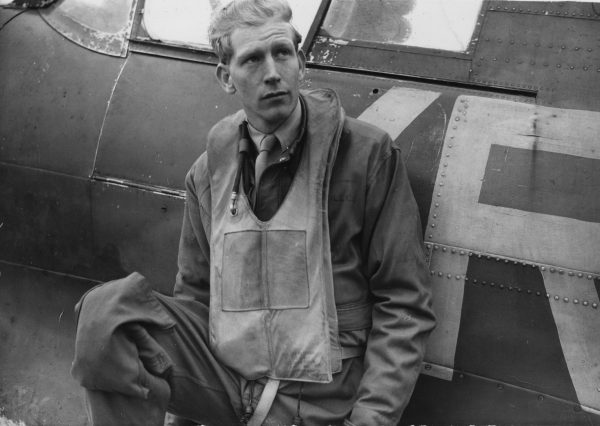
On page 58 is a story by Chesley G. “Pete” Peterson, now commanding No. 71 (Eagle) Squadron RAF — one of the three squadrons staffed with American volunteer pilots. Although only 21 years old, Peterson already has over 50 combat missions under his belt and was the first American promoted to flight lieutenant. In October he was awarded the RAF’s Distinguished Flying Cross (see page three) and in September 1942 he earns the Distinguished Service Order (see page two).
Peterson began his military career in the Utah National Guard before joining the Army Air Corps in 1939. He is the only American to earn the Distinguished Service Cross and the Distinguished Service Order, and retired as a major general in 1970.
Meanwhile, Rear Adm. John H. Newton’s TASK FORCE 12 departs Oahu for a roughly 2,400-mile round trip to Midway Island. USS Lexington (featured image) is ferrying 18 SB2U-3 Vindicators for Marine Scout Bombing Squadron 231 (VMSB-231) to shore up the atoll’s meager defenses. Protecting the flattop are three heavy cruisers: Chicago, Portland, and Astoria — and five destroyers: Porter, Drayton, Flusser, Lamson, and Mahan.
To the west, bad weather slows USS Enterprise and her task force down. The ships were due to make port at Pearl Harbor on Dec. 6, but are now delayed.
A story about the “millionaires of the Marine Corps,” who have left behind a 97-year history in China, is on page 57… Sports section begins on page 60
1: McCormick served as a cavalry officer during the Punitive Expedition into Mexico and fought on the Western Front during World War I as an artillery officer.
Evening star. (Washington, D.C.), December 5, 1941. Chronicling America: Historic American Newspapers. Lib. of Congress.
https://chroniclingamerica.loc.gov/lccn/sn83045462/1941-12-05/ed-1/
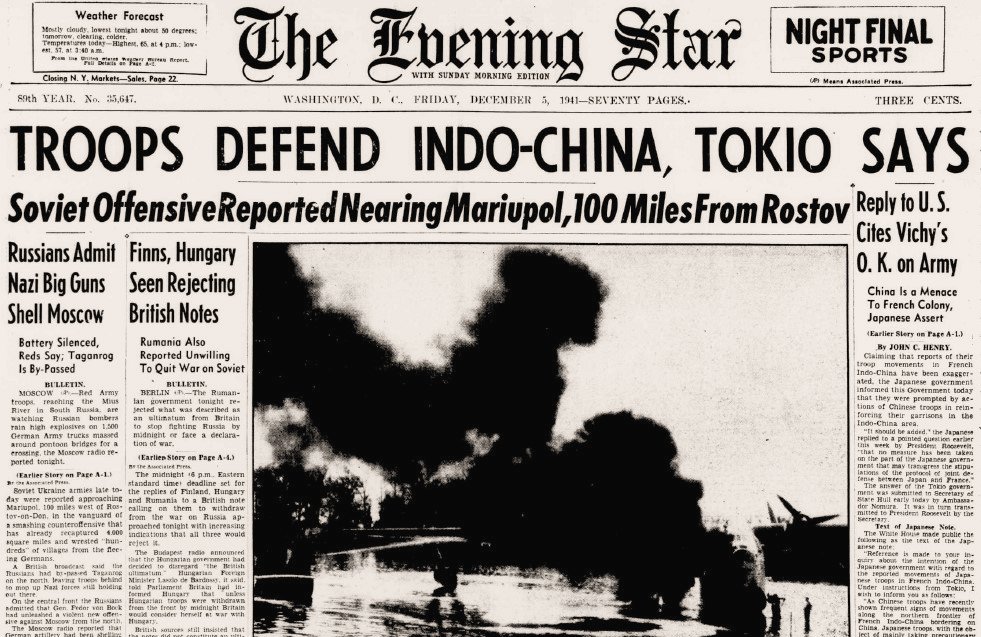
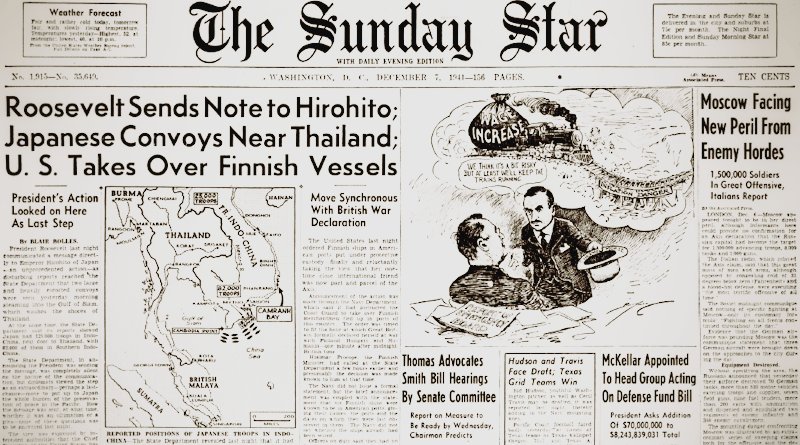
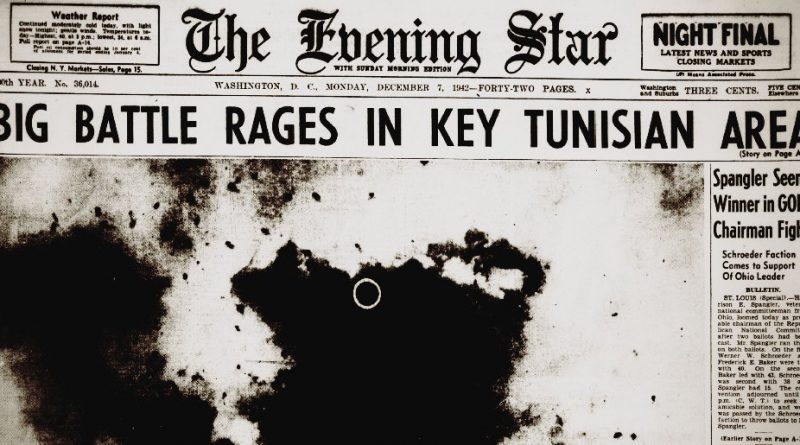
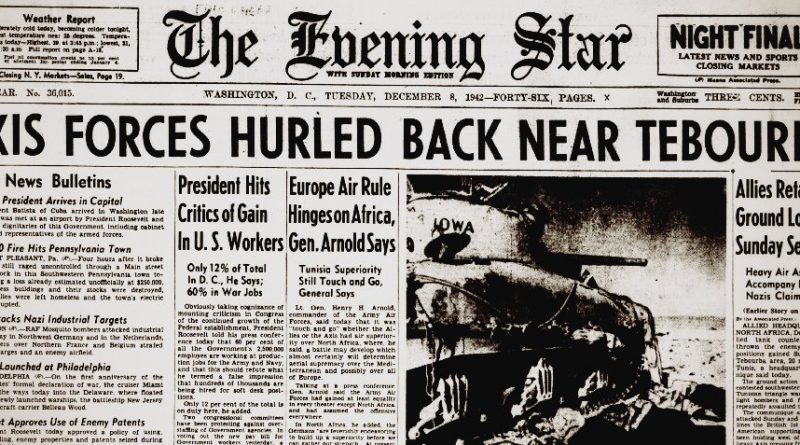
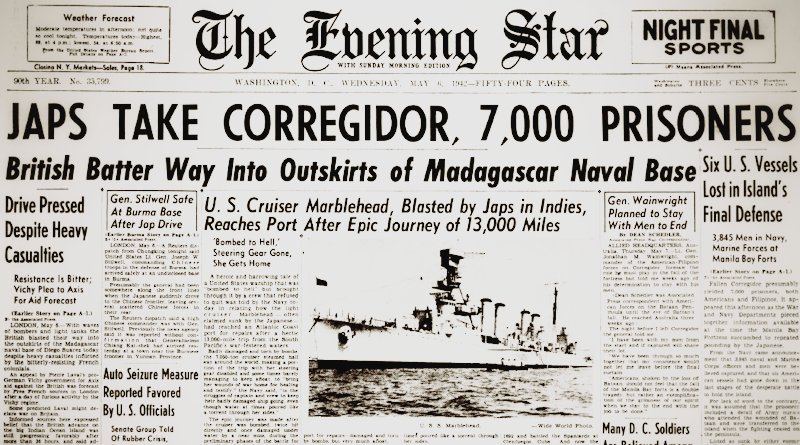
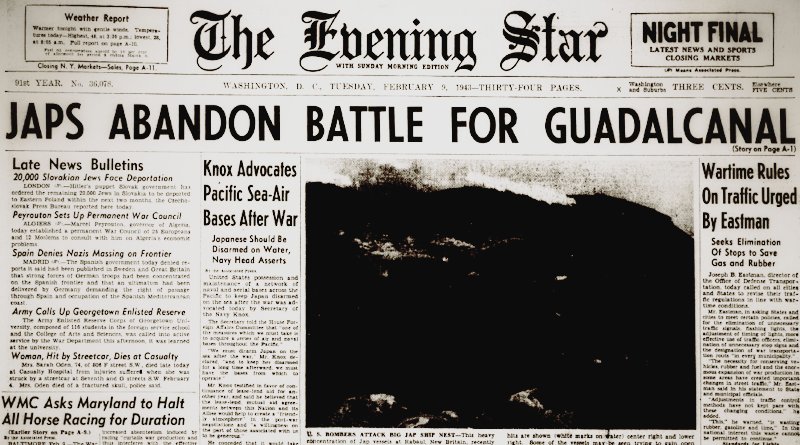
Admiral King had confirmed in 1940 that the US was already at war.